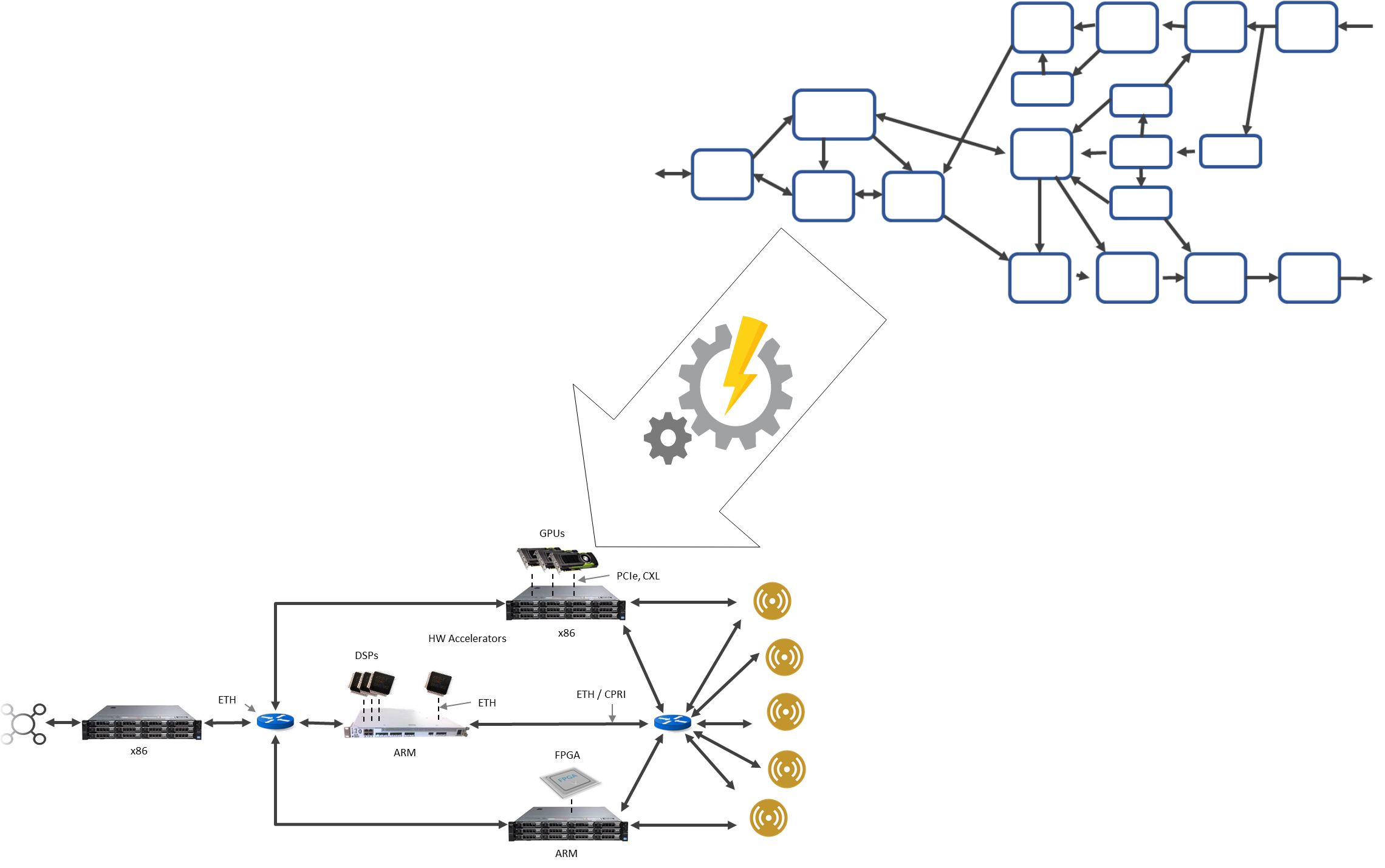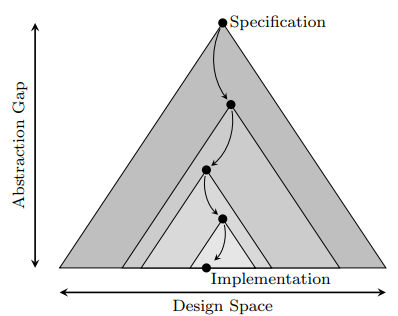ZOTI
Zero Overhead Topology Infrastructure
The ZOTI Project
The Zero-Overhead Topology Infrastructure Project sets out to aid in the development of high-performance applications on heterogeneous platforms by means of model-driven engineering.

This web site and repository are meant as a hub for gathering open-source tools, demos, tutorials and publications that can showcase and kick-start the development of synthesis flows from system models to deployable implementations w.r.t. the objective statement. This hub is planned to grow organically with sporadic additions as the project also grows. The material falls in one of three categories, as shown below: synthesis flows, tools, and examples.
Flows, Tools and Examples
ZOTI is an arena for combining, orchestrating, and “filling in the gaps” between state-of-the-art open-source tools/methods with the purpose of developing end-to-end design solutions.
- Synthesis Flows
- A flow is a transformational design process, usually chaining several design steps, for the purpose of solving a particular design problem. As per the third key principle of ZOTI the inputs and outputs of flows are models, wheres a flow itself represents a model refinement. Flows are generic and presented in terms of guidelines, whereas the tools implementing them can be changed or adapted to a particular use case.
- Tools
- A tool is an implementation of a specific task in a synthesis flow. Tools in the ZOTI suite are either computer programs, scripts, wrappers around existing open-source tools adapting them to a particular flow, or even pointers to existing open-source tools that can be used as-is. Their inputs and outputs are mainly intermediate representations of models expressed as serializable formats.
- Examples
- An example is a use case showing a particular instance of a synthesis flow, where design steps are usually implemented with tools in the ZOTI suite.
Goals and Key Principles
ZOTI does not “reinvent the wheel”, but rather employs conventional wisdom and existing tools to showcase pragmatic, scalable and future-proof methodologies.
As a project, ZOTI does not promise nor does it intend to pursue a “one-stop shop” for generic design and synthesis, but an environment where developers can describe systematic and traceable transformation flows from target-agnostic application models down to concrete implementation, as well as plug in machine intelligence into this process. In a very broad sense, its goal is to provide practical means to explore an application’s design space via systematic, computer-aided decisions and model transformations (see drawing below). This is done by staying true to three overarching principles:

- Traditional technology abstraction is too costly
- This refers to abstracting away the complexity of the underlying
machinery by means of software technology stacks (e.g. libraries,
run-times, containers, etc.). While this works well enough with the
majority of computational systems, there are a classes of systems
(e.g. high-performance or embedded) where the overhead implied by
such abstraction stacks is unacceptable, either because it reduces
some KPI (e.g., throughput, energy consumption, security) or because
it introduces hazardous behaviors (e.g. timing aspects). To
circumvent this, developers usually break the abstractions by
controlling and programming low-level resources (e.g. via assembly,
intrinsics, directives, low-level APIs), hence also breaking the
paradigm of the said abstractions (e.g. losing testability,
modularity, maintainability, etc.). ZOTI pursues a third approach,
where the developers program the systems at a high abstraction level
and systematically generate the low-level code by transforming
functions/behaviors to target-specific boilerplate code. Hence it is
the application model (e.g., the flow of data) which dictates the
implementation, and not an entire technology stack that hosts the
model.
This key principle captures the “Zero Overhead” part in ZOTI’s name.
- Meaningful decisions can only be taken on a complete view of HW and SW
- in tandem
- Also to cope with the sheer complexity, the separation of the
different parts of a system (e.g., SW, HW) is a necessity during
design and development. This approach, however, limits the insight
into the desired system behavior too early into the design process,
allowing only for at most local optimizations as well as external
assumptions which need to be resolved during system integration. To
unlock the full potential of a system HW/SW co-design principles
need to be applied. In this sense a cohesive view on how the
different aspects of a system interact with each other
(e.g. application-mapping-platform) can help in taking meaningful
design decisions and choosing optimal refinements.
This key principle captures the “Topology” part in ZOTI’s name.
- Models are the exchange currency between tools
- This states that, although acknowledging the role of models as
design languages, ZOTI values them rather for their ability to be
parsed, analyzed and serialized between different tools. While
showing an affinity to modeling paradigms that express concurrency
(e.g. dataflow), parallelism (e.g. algorithmic skeletons) and in
general lend themselves to efficient implementations, ZOTI does not
impose the usage of any particular language or model. Instead ZOTI
works with various intermediate representations, which can vary from
guidelines and schemas to existing open-source formats.
This key principle captures the “Infrastructure” part in ZOTI’s name.